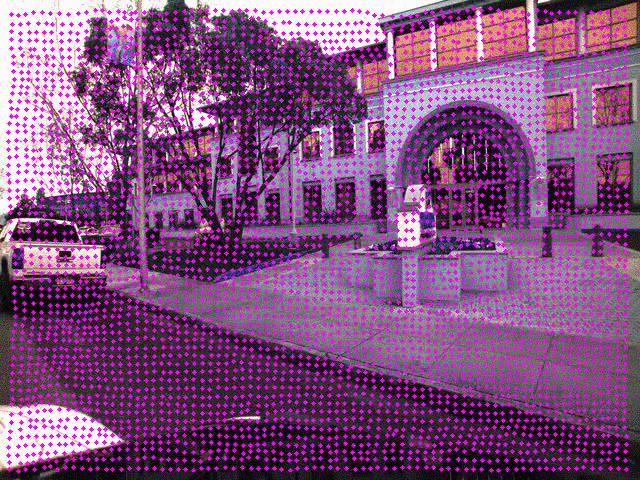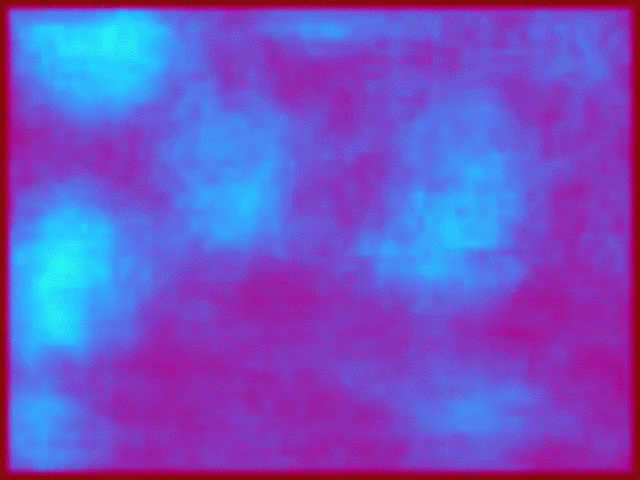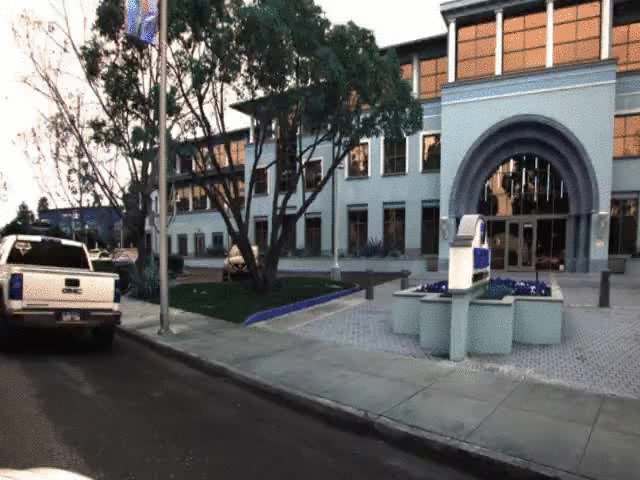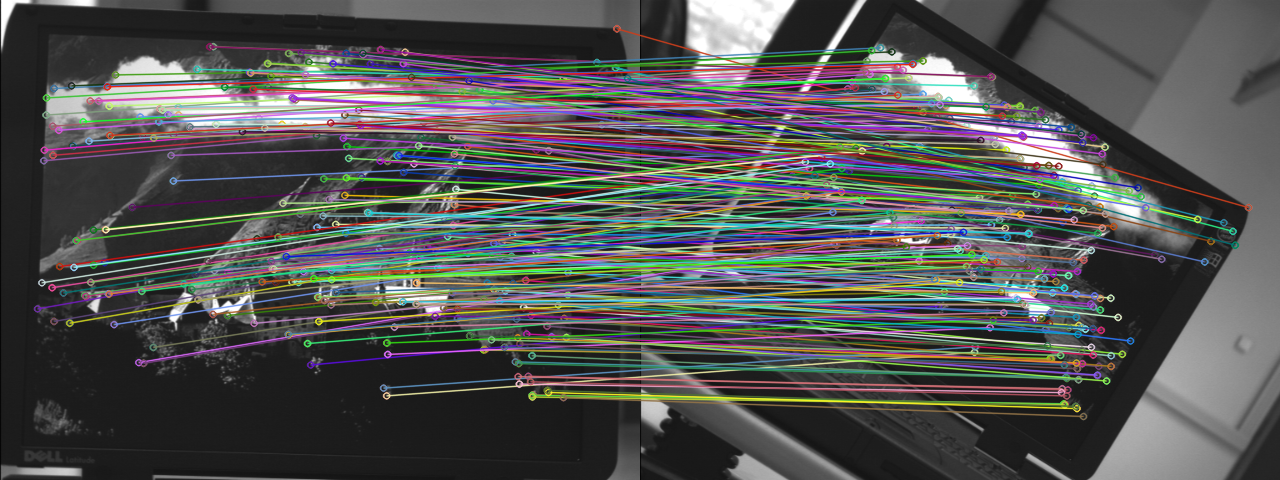- IO-Net: A novel proxy task for the self-supervision of keypoint description.
- KeyPointNet: An improved keypoint-network architecture that is especially amenable to robust keypoint detection and description.
You need a machine with recent Nvidia drivers and a GPU. We recommend using docker (see nvidia-docker2 instructions) to have a reproducible environment. To setup your environment, type in a terminal (only tested in Ubuntu 18.04):
git clone https://github.com/TRI-ML/KP2D.git
cd KP2D
# if you want to use docker (recommended)
make docker-buildWe will list below all commands as if run directly inside our container. To run any of the commands in a container, you can either start the container in interactive mode with make docker-start to land in a shell where you can type those commands, or you can do it in one step:
# single GPU
make docker-run COMMAND="some-command"
# multi-GPU
make docker-run-mpi COMMAND="some-command"If you want to use features related to Weights & Biases (WANDB) (for experiment management/visualization), then you should create associated accounts and configure your shell with the following environment variables:
export WANDB_ENTITY="something"
export WANDB_API_KEY="something"
To enable WANDB logging and AWS checkpoint syncing, you can then set the corresponding configuration parameters in configs/<your config>.yaml (cf. configs/base_config.py for defaults and docs):
wandb:
dry_run: True # Wandb dry-run (not logging)
name: '' # Wandb run name
project: os.environ.get("WANDB_PROJECT", "") # Wandb project
entity: os.environ.get("WANDB_ENTITY", "") # Wandb entity
tags: [] # Wandb tags
dir: '' # Wandb save folder
Download the HPatches dataset for evaluation:
cd /data/datasets/kp2d/
wget http://icvl.ee.ic.ac.uk/vbalnt/hpatches/hpatches-sequences-release.tar.gz
tar -xvf hpatches-sequences-release.tar.gz
mv hpatches-sequences-release HPatchesDownload the COCO dataset for training:
mkdir -p /data/datasets/kp2d/coco/ && cd /data/datasets/kp2d/coco/
wget http://images.cocodataset.org/zips/train2017.zip
unzip train2017.zipTo train a model run:
make docker-run COMMAND="python scripts/train_keypoint_net.py kp2d/configs/v4.yaml"To train on multiple GPUs, simply replace docker-run with docker-run-mpi. Note that we provide the v0-v4.yaml config files, one for each version of our model as presented in the ablative analysis of our paper. For evaluating the pre-trained models corresponding to each config file please see hte following section.
Download the pre-trained models from here and place them in /data/models/kp2d/
To evaluate any of the models, simply run:
make docker-run COMMAND="python scripts/eval_keypoint_net.py --pretrained_model /data/models/kp2d/v4.ckpt --input /data/datasets/kp2d/HPatches/"Evaluation for (320, 240):
| Model | Repeatability | Localization | C1 | C3 | C5 | MScore |
|---|---|---|---|---|---|---|
| V0* | 0.644 | 1.087 | 0.459 | 0.816 | 0.888 | 0.518 |
| V1* | 0.678 | 0.98 | 0.453 | 0.828 | 0.905 | 0.552 |
| V2* | 0.679 | 0.942 | 0.534 | 0.86 | 0.914 | 0.573 |
| V3 | 0.685 | 0.885 | 0.602 | 0.836 | 0.886 | 0.52 |
| V4 | 0.687 | 0.892 | 0.593 | 0.867 | 0.91 | 0.546 |
Evaluation for (640, 480):
| Model | Repeatability | Localization | C1 | C3 | C5 | MScore |
|---|---|---|---|---|---|---|
| V0* | 0.633 | 1.157 | 0.45 | 0.81 | 0.89 | 0.486 |
| V1* | 0.673 | 1.049 | 0.464 | 0.817 | 0.895 | 0.519 |
| V2* | 0.68 | 1.008 | 0.51 | 0.855 | 0.921 | 0.544 |
| V3 | 0.682 | 0.972 | 0.55 | 0.812 | 0.883 | 0.486 |
| V4 | 0.684 | 0.972 | 0.566 | 0.84 | 0.9 | 0.511 |
*-these models were trained again after submission - the numbers deviate slightly from the paper, however the same trends can be observed.
These examples show the model over-fitting on single images. For each image, we show the original frame with detected keypoints (left), the score map (center) and the random crop used for training (right). As training progresses, the model learns to detect salient regions in the images.
- Toy example:
- TRI example:
- Illumination Cases:
- Perspective Cases:
- Rotation Cases:
The source code is released under the MIT license.
Please use the following citation when referencing our work:
@inproceedings{
tang2020neural,
title={Neural Outlier Rejection for Self-Supervised Keypoint Learning},
author={Jiexiong Tang and Hanme Kim and Vitor Guizilini and Sudeep Pillai and Rares Ambrus},
booktitle={International Conference on Learning Representations},
year={2020}
}












